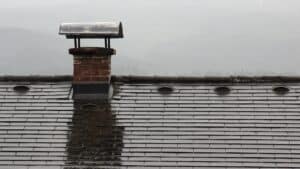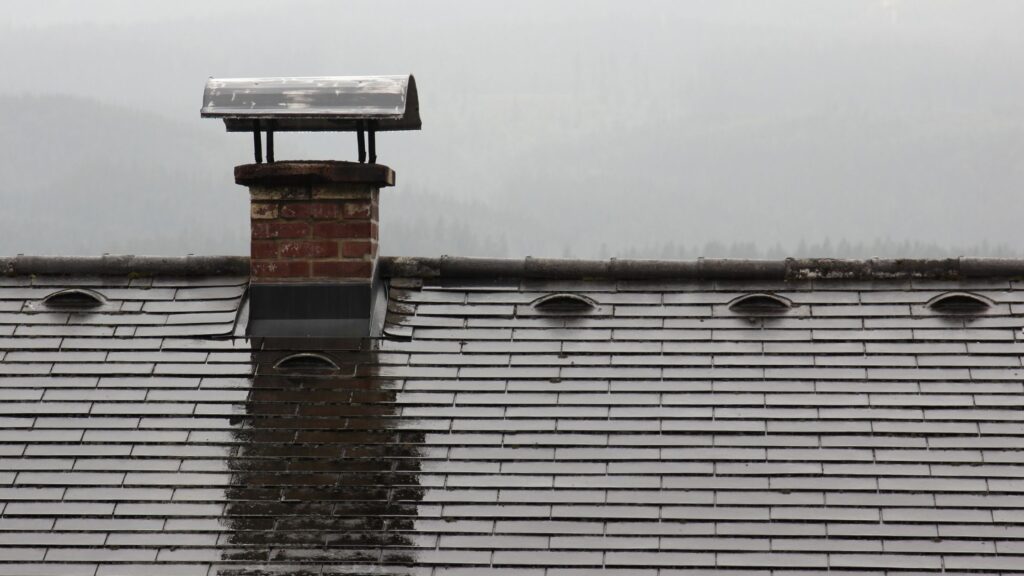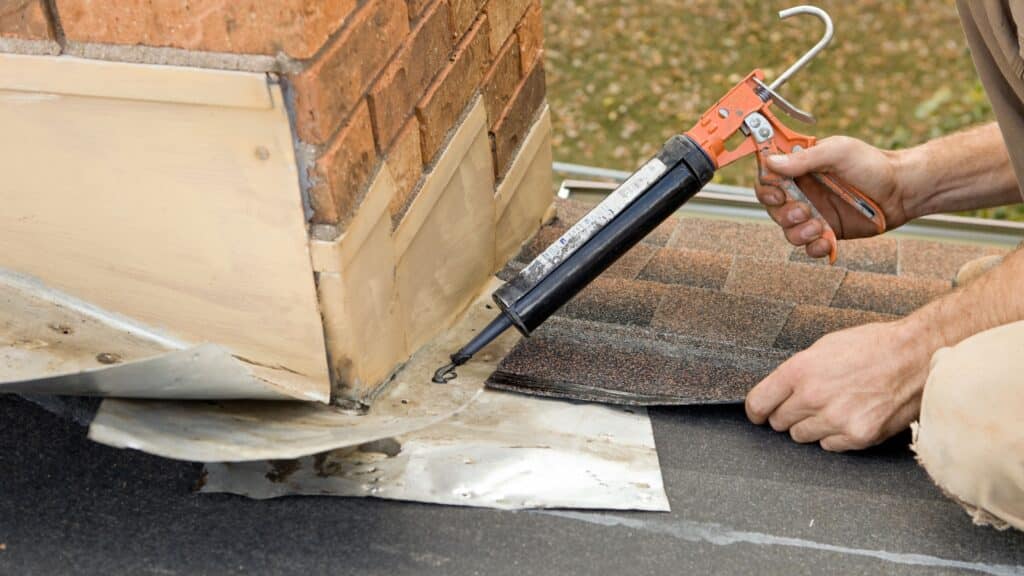A fireplace is meant to provide warmth and comfort, but when smoke begins to pour into your living space instead of rising up the chimney, it’s a clear sign that something is wrong. While many homeowners may brush off a smoky fireplace as a minor nuisance, it can actually indicate deeper issues with your chimney or ventilation system. Ignoring these warning signs can lead to bigger, more expensive problems down the road — and even pose serious safety risks.
In this post, we’ll explore the potential causes of a smoky fireplace and how they might be pointing to more significant issues with your chimney system.
Common Causes of a Smoky Fireplace
When your fireplace isn’t venting properly, it could be due to a variety of factors. Some of these causes are easy to fix, while others require professional intervention. Here are the most common reasons your fireplace might be smoking:
1. Blocked or Obstructed Chimney
A blocked chimney is one of the most common reasons for smoke not escaping properly. Debris like leaves, bird nests, and other materials can obstruct the flue, preventing proper airflow. Creosote buildup, which is a byproduct of burning wood, can also line the inside of your chimney and restrict ventilation.
Why it’s a bigger problem: A blocked chimney not only leads to poor ventilation but also increases the risk of a chimney fire. Creosote is highly flammable, and if too much accumulates, it can ignite and cause a dangerous fire inside your chimney.
2. Negative Air Pressure in the House
Modern homes are often tightly sealed for energy efficiency, but this can lead to a problem known as negative air pressure. When there’s insufficient airflow inside your home, the fireplace may struggle to draw air upward, causing smoke to spill into the room instead of rising through the chimney.
Why it’s a bigger problem: Negative air pressure can indicate a lack of ventilation throughout the home, not just in the fireplace. Poor ventilation can lead to a buildup of harmful gases like carbon monoxide, which is dangerous and potentially life-threatening.
3. Improper Chimney Height or Design
If your chimney is too short or poorly designed, it won’t create enough draft to pull smoke up and out of your home. The height of the chimney is crucial for ensuring proper airflow, especially when dealing with wind and weather conditions.
Why it’s a bigger problem: A chimney that’s too short can’t create the necessary airflow to maintain a proper draft. Without the right draft, not only will your fireplace continue to smoke, but it can also result in other ventilation issues throughout your home.
4. Cold Chimney Flue
If your chimney is cold, especially during the winter months, it can struggle to establish a strong draft. The cold air in the flue acts as a barrier, preventing the warm smoke from rising up and out. This issue is common if the chimney is not in regular use and has cooled off between fires.
Why it’s a bigger problem: A consistently cold flue can indicate poor insulation or other chimney inefficiencies, which might not just affect your fireplace but could be leading to heat loss throughout your home. It also causes more creosote to build up as the smoke cools too quickly, leading to blockages and fire hazards.
5. Chimney or Fireplace Damper Issues
The damper controls the airflow in and out of your chimney. If it’s stuck, closed, or damaged, it can block the smoke from escaping. In some cases, homeowners forget to open the damper before starting a fire, or it may become rusted or warped due to wear and tear.
Why it’s a bigger problem: A malfunctioning damper can be a sign of rust or other damage in the chimney system, often due to moisture infiltration. If left unchecked, this can lead to long-term damage to the chimney structure and the need for expensive repairs.
Potential Risks of a Smoky Fireplace
A smoky fireplace is more than just an inconvenience; it can pose serious risks to your home and health. Here are some of the dangers associated with poor chimney ventilation:
1. Increased Risk of Chimney Fires
Creosote buildup inside your chimney can easily ignite, leading to dangerous chimney fires that can spread to the rest of your home. If your fireplace is producing more smoke than usual, it could be a sign that creosote has accumulated and is blocking the chimney.
2. Carbon Monoxide Poisoning
When smoke doesn’t escape through the chimney properly, it can lead to a buildup of harmful gases like carbon monoxide. Carbon monoxide is odorless and colorless, making it difficult to detect. Prolonged exposure can lead to serious health issues, including dizziness, headaches, and even death.
3. Water Damage
A smoking fireplace can also indicate that water is getting into your chimney system. If the chimney cap is damaged or missing, rainwater can enter and cause rust, cracks, or other structural damage. This can weaken the chimney and lead to further problems with smoke and ventilation.
How to Address a Smoky Fireplace
If you notice your fireplace is smoking, it’s important to address the problem quickly before it leads to more serious damage. Here’s what you can do:
1. Schedule a Professional Chimney Inspection with True Ventilation
A professional chimney sweep, like those at True Ventilation, can inspect your chimney for blockages, creosote buildup, and structural damage. Regular inspections and cleanings are key to preventing smoke problems and ensuring your chimney is safe to use. True Ventilation offers expert chimney inspections in Catskill, Greene County, Hudson County, and surrounding areas to keep your home protected.
2. Check the Chimney Cap and Damper
Make sure your chimney cap is in place and functioning properly. A missing or damaged cap can allow rain and debris to enter the chimney, causing blockages and moisture damage. Also, check that the damper is opening and closing correctly.
3. Improve Ventilation
If negative air pressure is the issue, consider opening a window near the fireplace to improve airflow. You may also need to address overall ventilation issues in your home by consulting with a professional about your HVAC system.
4. Preheat the Chimney
Before lighting a fire, try preheating the chimney by rolling up a newspaper, lighting it, and holding it up the flue for a few seconds. This can help warm the air and establish a better draft.
5. Ensure Proper Chimney Height
If your chimney is too short, you may need to consult with a professional about extending its height. This will improve the draft and reduce the amount of smoke entering your home.
Conclusion: Don’t Ignore a Smoky Fireplace
A smoky fireplace is often a sign of more serious problems with your chimney or ventilation system. While it may seem like a minor inconvenience, ignoring the issue can lead to larger problems such as chimney fires, carbon monoxide poisoning, and structural damage. By addressing the causes of a smoky fireplace and seeking professional help, you can ensure your home stays warm and safe this winter.
For chimney inspections, cleaning, and repairs in Catskill, Greene County, Hudson County, and surrounding areas, contact True Ventilation. With over 20 years of experience, our team can assess and resolve any chimney issues to keep your home safe. Call us at 888-775-9498 or email us at trueventilation@gmail.com to schedule an appointment.














